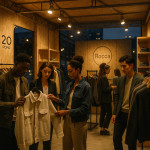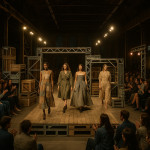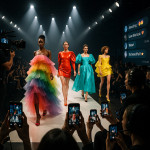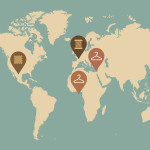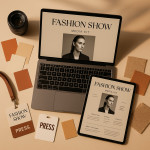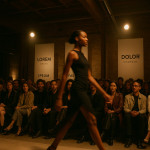Fashion week fringe events: securing a slot and press coverage without an agent
You do not need a big-name agent to ride the fashion-week wave. This guide shows independent designers how to win a fringe event slot, keep costs under control and attract journalists who matter. Follow the proven timeline, tools and media tactics below to transform your collection launch into a headline-worthy moment.
Why fringe events are a shortcut to fashion-week buzz
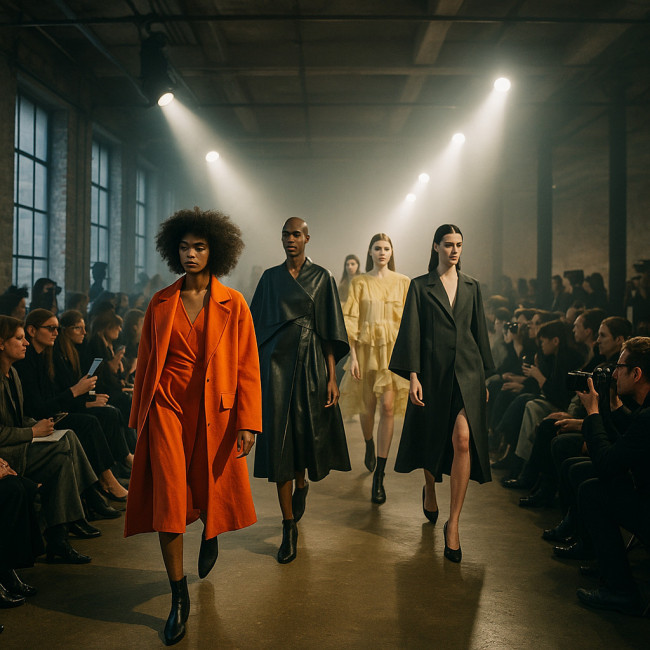
Official runway calendars are booked months in advance and often cost six figures. Fashion week fringe events—presentations, pop-ups, showroom take-overs—offer designers faster entry, smaller fees and a setting where buyers and editors are more relaxed. According to the CFDA, 34 % of U.S. editors discover at least one new label per season through off-schedule programming. The opportunity is real.
Key advantages
- Smaller venue = intimate storytelling that suits emerging brands.
- Shorter lead time (4-10 weeks) compared with main-schedule shows (6-12 months).
- Lower technical requirements reduce production risk.
- Press love “underdog” narratives that set them apart from mainstream peers.
Design your fringe-event blueprint
1. Clarify objectives first
Decide whether you want wholesale orders, direct-to-consumer buzz, social content or investor attention. Every production decision—venue size, guest list, lighting—flows from these goals.
2. Pick the ideal slot on the fashion-week fringe
Scan the city's master calendar and note dead zones when no headline label shows. Mid-afternoon gaps (15:00–17:00) and late-night openings (after 21:00) draw media searching for something fresh.
3. Select the right format
| Format | Typical Cost (USD) | Guest Capacity | Ideal Lead Time | Press Appeal |
|---|---|---|---|---|
| Gallery pop-up | $4 000–$8 000 | 50–120 | 6 weeks | High for art-fashion cross stories |
| Presentation studio | $6 000–$15 000 | 80–200 | 8 weeks | Moderate; practical for buyers |
| Runway in a club | $12 000–$25 000 | 150–400 | 10 weeks | Very high if styling bold |
| Showroom take-over | $2 500–$5 000 | Open door | 4 weeks | Niche; great for buyers |
Need eco-credentials? Our guide to sustainable runway nights lists venues with built-in recycling and LED rigs.
4. Plan your production timeline
- W-10 weeks: lock venue and format.
- W-8 weeks: shoot lookbook; start sponsorship outreach.
- W-6 weeks: send first press save-the-date.
- W-4 weeks: confirm caterer, lighting and music; drop teaser on socials.
- W-2 weeks: dispatch full media kit and RSVP tracker.
- W-1 week: rehearse run-of-show; send reminder to confirmed press.
- Event day: capture live content for real-time stories.
To sharpen your sponsor outreach, download the sponsorship pitch deck checklist.
How to secure a fringe slot without an agent
Research and shortlist venues that welcome independents
Look for galleries, concept stores and co-working lofts that have previous fashion-week listings. They understand foot-traffic spikes and provide readymade equipment, lowering your tech budget by up to 25 %.
Pitch venue owners like a collaborator, not a tenant
- Lead with the story: “Our collection reuses end-of-roll silk from local mills.”
- Outline mutual PR: share press contacts and agree on co-branded posts.
- Offer trade: garments for staff uniforms or window displays can shave rental cost.
Leverage community co-signs
Borrow credibility from design mentors, previous clients or micro-influencers. A two-line endorsement in your venue email often tips the deal when you lack agency representation.
Layer smart partnerships
Food, drinks and installation partners cut costs while adding storytelling angles. Brands that align with your values will often cover part of the venue fee in exchange for exposure.
Use the right digital directories
List your upcoming showcase on the clothing designer event directory. Buyers browsing by date and city can add your event to their route, boosting attendance without PR spend.
Press coverage playbook for independent designers
Build a targeted media list
Skip generic “fashion@newsroom.com” addresses. Instead, find the specific junior editor who wrote about a related sustainability angle last season. Aim for 25 curated contacts; quality beats volume.
Craft a strong hook
Editors receive 400+ pitches during big weeks. Tie your concept to a topical headline: circular textiles, AI fit sampling, community up-cycling. Show them why your story extends beyond garments.
Prepare a bulletproof media kit
Include 300-dpi model shots, a 50-word collection bio, designer headshot, venue map and contact phone. For layouts that convert, see our media-kit essentials guide.
Offer exclusive content
Reserve one backstage image or quote for each top outlet. Exclusivity increases pick-up rates by 40 % according to PR Week surveys.
Facilitate on-site reporting
- Stable Wi-Fi for real-time posts.
- Quiet corner for quick interviews.
- Press lanyards that double as USB drives containing the full asset pack.
Follow-up timing
Email high-resolution runway photos within two hours of show close. Then send a one-paragraph recap the next morning. Editors work on tight deadlines; speed equals coverage.
Going hybrid? Stream the presentation and consult our livestream showcase tips for camera angles that thrill remote journalists.
Cost-saving tactics that keep quality high
Repurpose assets
Use your lookbook shoot set as event décor. You halve build-out time and create visual consistency across channels.
Book student talent early
Film students, up-and-coming stylists and DJs crave portfolio material. Provide clear briefs and you can save 60 % on staffing while nurturing future allies.
Go lean on invite printing
Send QR-coded emails for most guests and reserve embossed cards for 20 VIP journalists. Paper spend drops from $450 to under $80.
Case study: a pop-up that made Vogue's “Ones to Watch” list

Designer Ani Rao staged her first off-schedule show in a Brooklyn art loft. Budget: $11 950. She offered the gallery three made-to-measure jackets for permanent display, which covered 40 % of rental. A concise 18-look presentation ran twice in one evening, allowing editors to attend between bigger shows. Her press list? 17 names. Eleven articles followed, and wholesale inquiries tripled within a week.
Quick self-assessment quiz
FAQ
- How many looks should a fringe presentation include?
- Keep it between 12 and 25 looks. Editors can absorb the story quickly, and sample production stays affordable.
- Do I need security?
- Yes. Hire at least one licensed guard for crowd control and sample protection. Many venues bundle security in the rental fee.
- Can I charge tickets?
- You can, but press expect free access. If you ticket, offer added value such as limited merchandise or a designer Q&A.
- What if no journalists RSVP?
- Live-stream the show, tag editors in clips, and send post-event lookbook PDFs. Many outlets cover collections after the fact.
- How do I track ROI?
- Measure press mentions, buyer meetings booked, newsletter sign-ups and social reach within 30 days of the event.
Take the next step
Your label can own the conversation this season. Refine your timeline, polish your media assets and secure that fringe slot now. Need deeper guidance? Download the pop-up showcase plan and start booking venues today.
You have everything you need—go claim your runway.
